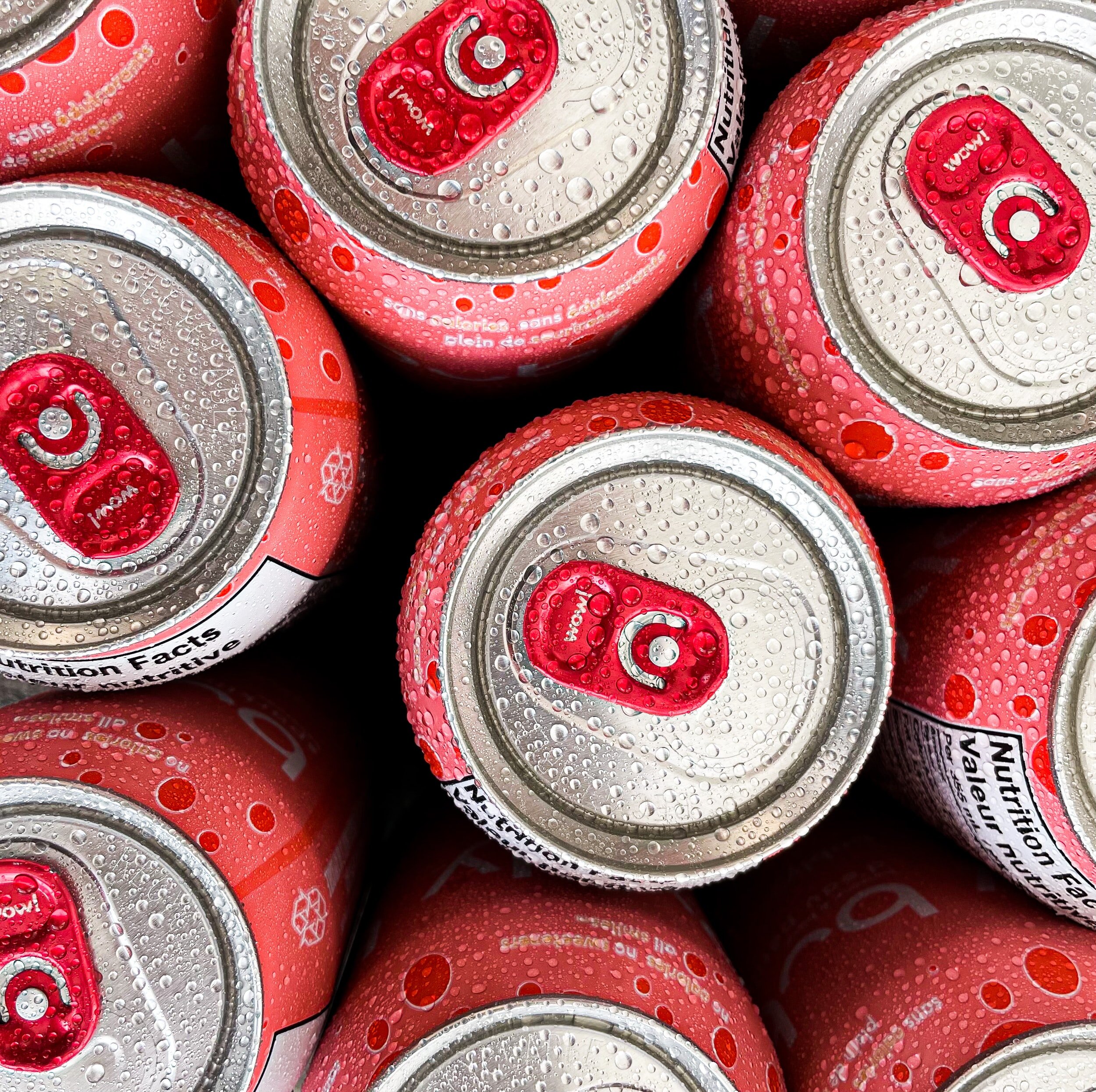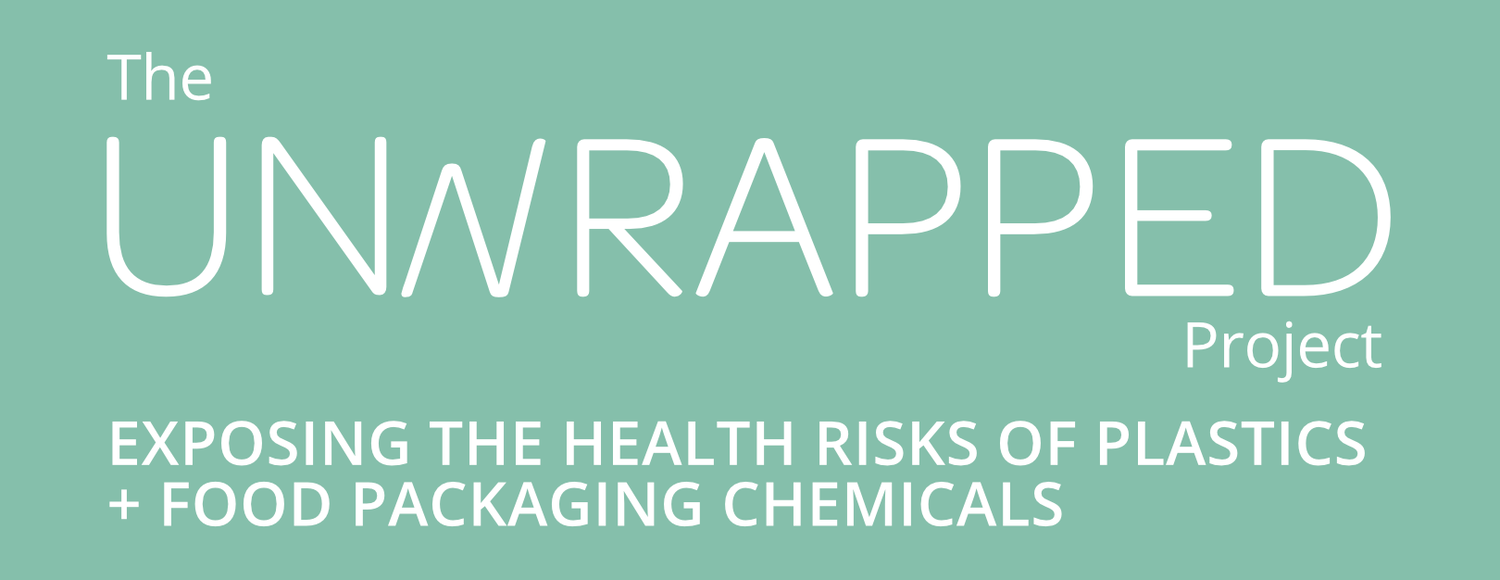
Recycled Content in Food Packaging & Toxic Chemical Exposure
Using recycled packaging waste to create new food packaging increases the number and level of chemicals that can then migrate from the packaging into foods.
This is due to:
contaminants in the original package
degradation of the material during recycling
accumulation of contaminants when materials are repeatedly recycled
non-food grade materials that enter the recycling system
Contaminants in Recycled Plastic
Typical groups of contaminants that have been reported in recycled plastic include: flavor/aroma/odor compounds; oligomers, monomers, and derivatives; additives and their degradation products (such as UV absorbers, antioxidants, adipates, and phthalates); brominated flame retardants (in black plastic); and 2-Methoxynapthalene, sulfuric compounds, and ethanol with fusel oil. Of particular concern are the higher level of phthalates in recycled plastic than the feedstock plastic, and the presence of brominated flame retardants in black plastic which is associated with the recycling of plastic derived from waste electronic equipment.
Multimaterial multilayers
Generally, multilayered packaging is not recycled back into food contact materials. Beverage cartons usually comprised of about 75% paperboard, 20-21% plastic (usually PE) and up to 5% aluminum foil. In a hydropulping process, the paperboard breaks down into a fiber soup that can be separated from the plastic and aluminum. This paper is recycled but not into food contact material. The PE is sent to incineration/energy recovery and aluminum recycled, but neither is used again in food contact materials. Pouches and tubes and bags are made of laminated multimaterial multilayers of plastic. Recycling for laminated materials is not widely available.
Contaminants in paper & board
More than 250 health-threatening chemicals were identified in recycled paperboard used for food packaging. Recycled pulp shows much higher levels of contaminants than nonrecycled. Contaminants detected in recycled paperboard include: mineral oil (from print inks, adhesives, waxes, and processing aids), bisphenols (from thermal paper receipts, inks and glue), phthalates (from inks, lacquers, and adhesives), Diisopropyl napthalenes (DIPN) (from carbonless copy paper), photoinitiators (UV-cured printing inks), inorganic elements (pains, pigments, recycling of non-food grade paper and board, processing aids, reaction products, various additives); 2-Phenylphenol (OPP) (an antimicrobial, fungicide, and disinfectant and raw material for pigments and rubber additives), Phenathrene, (a PAH used in newspaper ink pigments), and PFASs (used as moisture and greaseproof barrier).

Contaminants in metal & glass
Aluminum cans: Repeated recycling may result in accumulated metals and metalloids. The addition of primary aluminum helps reduce the concentration of such impurities. Since most aluminum cans are coated, there isn’t direct contact with the beverages and foodstuffs.
Steel cans: Usually made from tin-coated steel (i.e. tinplate) or electrolytic chromium coated steel (ECCS). Tinplate is usually lacquered with organic coatings as a barrier to the food, while ECCS requires an organic coating for corrosion resistance. It is unknown whether the use of recycled steel has an impact on metal migration from cans into foodstuffs.
Glass: Lead is present in container glass and may migrate into foods. X-ray fluorescence or UV fluorescence analysis is used to detect cullets with increased lead content allowing it to be sorted out. Metal ions from crystal glass can accumulate in recycled glass and migrate into foodstuffs. Chromium and nickel migration has been found at levels too low to pose a human health risk.
General Solutions
The safety of recycled packaging for food contact could be dramatically improved by phasing out hazardous substances used in all materials entering the recycling stream. However, even with such improved regulation, a period of 10-20 years would be required for these contaminants to reach insignificant levels.
Reuse and reduce need to be a bigger part of the food delivery system. Rather than reducing through light-weighting via thinner, more complex materials (i.e. plastic laminates), reduction should be achieved via decreasing the packaging-to-volume ratio (i.e. bigger portion sizes for durable foods). Changing food production and distribution to focus on local production and consumption of seasonal foods that need less packaging and food packaging chemicals is also recommended. Reuse could also be strongly promoted, using safer glass and metal containers.
Potential Methods for Reducing Migration from Paperboard
Several techniques can be used to reduce, but do not eliminate, migration of contaminants. Reduction methods include: de-inking prior to recycling, using vegetable-based inks rather than mineral oil-based printing inks, using internal bags, applying barrier layers on the inner surface of the package, or including absorbents in the paperboard.






